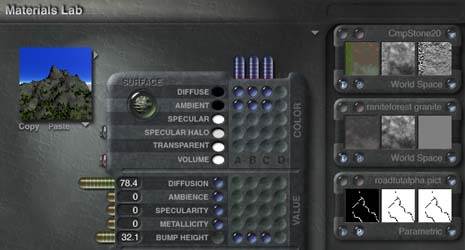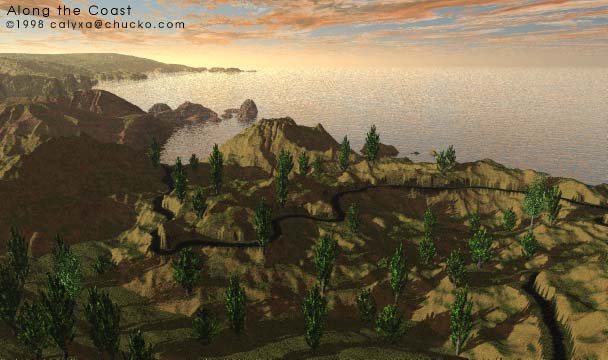The trick here uses the ABC mode of the Material Lab. See my
ABCs of Naturalistic Marbles
tutorial for a different exploration of ABC mode.
First, pick a good material for your mountain but note that it must
be a single texture material, that is, having only an A texture
component.
Next, control-click in the C column for Diffuse and Ambient. This will
put random textures into the B and C texture channels. In the C texture
channel, click the lower left P button to change this component to a
2D picture component. Then click the upper-left pink button to open the
picture library. Load your cleaned-up alpha channel made in Step 4 into
both the image and mask areas. In the central (mask) image, click the
half-white/half-black button to invert the mask. Exit the picture library
back to the Materials Lab.
Pick a road-like texture for the texture B channel. Depending on the
texture you've chosen for channel A, you may or may not want to have
the bump height also use the ABC mode. That way, you can ensure your
road is smooth.

If your two textures for terrain and road are quite different, you will see
the road texture climbing up the cut areas and running down the fill areas.
To avoid this, go back to Photoshop and make a copy of your clean roadpath.
Edit that copy so that the white area is even narrower, then use the narrow
roadpath for the texture C alpha information.

I believe I used a 512 terrain in the foreground of this one. There's quite
a bit more in this picture than in the first example on this page.